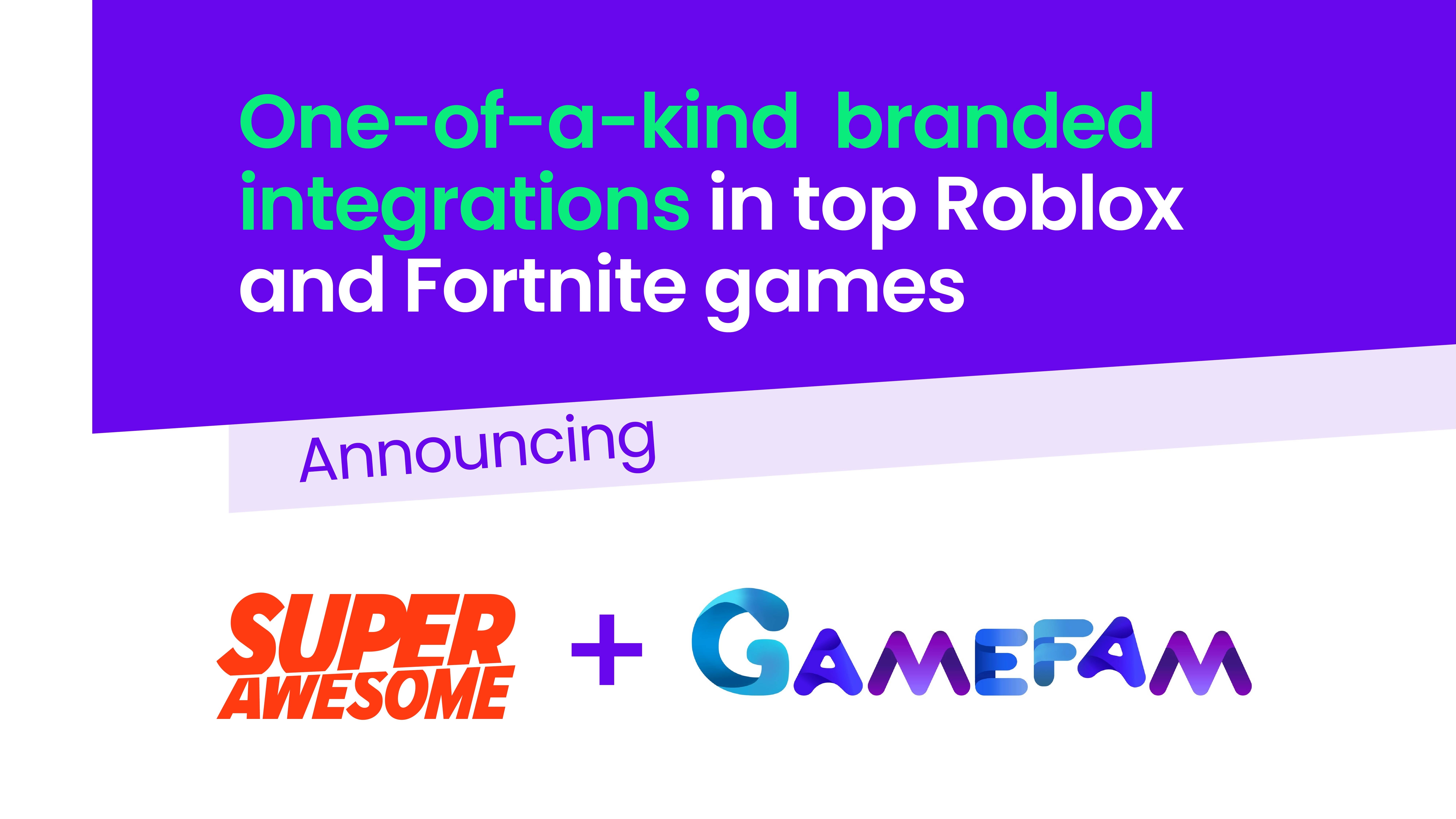SuperAwesome is a category-defining company. That makes it both a fascinating and challenging place to be a product manager. Over the next few articles, I want to share some of my thoughts on how we approach product strategy in a category-defining product company.
At SuperAwesome, we build kidtech. Kidtech exists to make the internet safer for kids by ensuring kid-safe digital products deliver privacy and responsibility by design. If you want to know more about the principles that underpin kid-safe online products, check out the Kidtech Standard, and please consider endorsing it.
Kidtech is an emerging category focused on enabling the internet for kids (who are now over 40% of new online users). We are not alone in attempting to solve kidtech problems, but it’s currently a pretty exclusive club. The kidtech space is still early, and because of this, there are so many problems to solve, and so many potential opportunities to pursue.
In defining the kidtech category, we need to be aware of where all these opportunities are, but as a product organisation, we know we cannot address them all. We need to eliminate some.
The problem is that we rarely receive clear signals from the market, as even when we identify our customers’ needs, quite often they don’t recognise them yet. This makes eliminating opportunities in our emerging category extremely difficult.
Unrecognised needs
SuperAwesome has a couple of superpowers. One of them is our product maturity cycle’s ability to discover our customer’s unrecognised needs.
When the phrase “unrecognised needs” comes up, it is normally accompanied by Henry Ford and Steve Jobs quotes. While we aren’t trying to drive adoption of the motor car as a replacement for the horse, or a touch-screen tricorder as a replacement for a Nokia 3310, we are trying to build an internet fit for kids atop an technical ecosystem built in near-total denial of the existence of children.
I will dig into our product maturity cycle in more detail in another blog post. In summary: we try hard to only build solutions to problems we ourselves are experiencing directly as an organisation, and only develop the solution into an enterprise platform once we are confident the solution works at scale for our business.
It’s not magic. We are able to recognise our customers’ needs before they do because we are operating a kids digital business and so encounter the same problems as them. We are actively looking for kidtech problems to solve and we have a strategy that priorities fixing them.
Unfortunately, discovering an unrecognised need doesn’t automatically mean your customer recognises it.
Another of our superpowers is our KidAware program, which provides education about global kids digital privacy legislation, the challenges those laws present to brands and developers and how to address those challenges.
Education is critical for any product company that is looking to solve an unrecognised need. Before a category is well established, no-one understands what you are selling, or why. Customers don’t even know they have the problem you are solving. Today, everyone wants a touch-screen on their mobile phone, but there was a point where it was provable with science that we didn’t. We can’t force our customers to understand that they have a problem, but we can educate them about the problem space, and hope that they get there.
Timing Matters
When we initially built Kids Web Services, our platform for obtaining verifiable parental consent to use kids personal data to drive personalised experiences, it was to support a consumer experience called SwapIt (RIP).
SwapIt was like an Ebay for kids, allowing them to trade toys instead of buying and selling them. In order to enable the kids to post the toys to each other, we needed to collect their postal addresses. Because COPPA exists, in order to collect and share the kids’ postal addresses, we needed to involve their parents.
Want to know more about COPPA and how to comply with it? Check out our KidAware e-learning courses.
Based on our own first-hand experience, it was clear to us that providing kids with the kinds of deeply engaging and personalised online services that grown-ups enjoy would require a scaled consent platform that allowed developers to outsource the considerable legal and UX complexity of collecting verifiable parental consent (VPC). The trouble was, at the time we built the platform, very few other developers could see this. We had a solution to a problem we knew existed and others had, but signals were pretty strong: a developer-facing platform for obtaining VPC was not required by the market.
It was tough. We knew it was the market, not our solution, that was wrong. Heads were buried in the sand that couldn’t stay buried forever. We had experienced the problems of VPC first-hand, and we knew others would too, in time. Inevitably they did in 2018. Thanks GDPR-K!
In Case Of Fire: Break Glass
I’m starting to see product strategy in a category-defining company as a series of roadmap items wrapped in conditional statements.
When we identify an opportunity, we need to establish what the pre-conditions for success are. What assumptions underpin this value proposition being real. Do those conditions exist now?
- If they do → let’s see if we can find a minimum valuable expression of the solution.
- If they don’t → Are these conditions feasibly going to emerge in the next 2 years?
- No → Drop it, it’s not worth it.
- Yes → Let’s wrap our product idea in some conditional statements and set about educating our sales team about the right questions to ask to keep us on the pulse, and when to send up a smoke signal that the conditions for life might be emerging.
The structure of this thinking emerged from our adoption in the product team of “Opportunity Solution Trees”. You can read more about SuperAwesome’s journey with this tool on Teresa Torres’ ProductTalk blog. We analyse our product opportunities in terms of the assumptions that underpin them.
A Strained “Trapper” Metaphor
Perhaps this sounds like hedging our bets. I think of it more as preparing a “value trap”. Like some sort of hunter in the tangled forest of this emerging category: we scout out the terrain, identify key strategic choke-points, wait to see if a delicious-looking rabbit comes past. If it doesn’t, we set up a snare and make sure to find a way to be notified should a rabbit walk into it.
For us, this snare can take multiple forms. It might be a well-briefed sales team. It might be a good blog post. It might be an early but imagination-catching prototype.
What is critical is that we understand the assumptions or pre-conditions that underpin our product/market fit hypothesis, thoroughly ascertain their current validity of those assumptions in conversation with our customers and the market, and have a way to learn quickly if that bit flips
While we didn’t write it like this at the time, for Kids Web Services in 2016, the conditional roadmap item looked something like this:
If
{ regulatory and PR pressure is significant enough for game developers to feel that ignoring kids in their games is an unacceptable business risk }
then
{ game developers will want an parental consent management solution }
When we built the first version of Kids Web Services, this conditional statement wasn’t true. The product was good, but the market wasn’t ready yet. We mothballed the product. The snare was set. 18 months later, this conditional statement flipped to true. The trap was sprung and the tarpaulin was pulled off the product.
To continue our hunting metaphor (I live in the UK, I have literally never hunted anything) education is like beating sticks on the bushes, driving the rabbits before us, hopefully into the snares.
Schrödinger’s Roadmap
These value traps could be seen as bets, but I think that they are something different in actuality. They are opportunities whose ultimate viability is uncertain but known to be in the future.
Perhaps the practice of constructing a visionary product strategy in an emerging category is an exercise in defining those value propositions you understand to be your market’s unrecognised needs, defining the assumptions about those customers or the market conditions that must be true in order for product/market fit to be credibly possible, and then wrapping your roadmap item in a conditional statement.
Strategy or Indecision?
But wait: isn’t this just me weedling out of making the hard decisions that it is my job to make as a product leader? Fail fast! Kill your darlings!
As a product manager, it is very difficult to kill a product when the reason you don’t have product/market fit is that the target market hasn’t realised they have the problem you solve. It’s senseless. It’s excruciating to flush value down the drain just because the philistines have yet to see the light. You can either waste the energy you’ve spent by killing the product, or waste more energy by continuing to work on a product that doesn’t have a market (yet). Is there a third option?
As a product leader, you must be user and customer-centric, data-driven and decisive. But you must also be highly strategic, and (dare we say it) visionary.
As a product leader, those around us expect and require a level of certainty from us. We are tasked with relentlessly pursuing product/market fit and ruthlessly killing our darlings when they fail to find it.
When our answer to “is this product viable?” is “maybe, I’m sort of waiting to see,” then our CEO will rightly be suspicious about whether or not we are just hedging our bets to avoid having to make a hard decision. As product leaders, we are expected to be decisive.
In terms of our product roadmap, we don’t say: “we will solve for X in Q3” (when we have no way to know if the condition for life will have emerged by then) , or “we’ll reassess X in Q4 with our customers” (when the problem could suddenly become much more important earlier). Instead we say: “we will regularly ask our customers about X. If our currently invalidated pre-conditions change, then we will reassess the priority of solving for X for our customers at that time.” Establishing the methods to frequently test for these pre-conditions and discover when the light goes green is probably something for a later post.
I’m starting to see product strategy in a category-defining company as an exercise in creating traps for value, placing them smartly, and waiting for them to go off. For the avoidance of doubt, I do not advocate setting bear-traps in the woods for your customers.
Want to join the hunting party and make the internet safer for kids? We are hiring!
Mike Hutchinson is Chief Product Officer at SuperAwesome.



